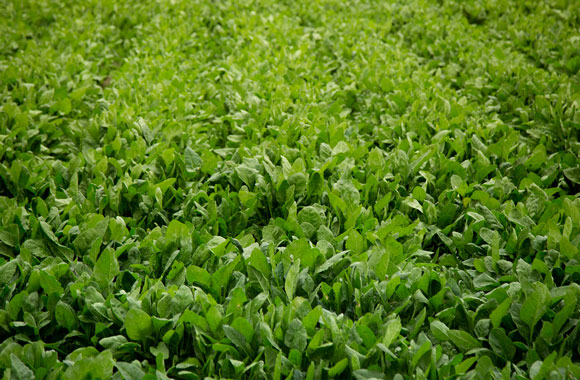May 3, 2021Four Ways to Maintain Soil Moisture Content While Refining Water Use
{Sponsored} “Vegetables are made up of 80 to 90% water, so it makes sense that yields and quality are closely correlated with soil moisture status,” said Matt Comrey, technical nutrition agronomist, Wilbur-Ellis Agribusiness. “If moisture is limited, we will often see underdeveloped heads on leafy vegetables or premature heading in broccoli and cauliflower.”
Comrey notes that with a mild winter, water is going to be in short supply — making it especially important for growers to focus on refining water usage this year. He provides four key strategies for growers looking to optimize water usage while maintaining adequate soil moisture in vegetable fields.
- Know your water application rates and plant root depths. In addition to under-watering, applying too much water in vegetable crops can reduce the quality and postharvest life of the crop. By overirrigating, water is wasted and the risk of nutrient leaching increases.
“I highly recommend doing a catch-can test and measuring what comes out of the drip hose and out of the emitter to calculate exactly how much water your system is putting out,” said Comrey. “When water is limited, it’s also important to know the exact depth that you need to be wetting to avoid overirrigating.”
- Use soil monitoring tools to make informed irrigation decisions. While irrigating based on the feel or appearance of the soil is a commonly used method, more precise methods such as soil water monitoring or crop-water demand calculations will allow you to produce healthier, more consistent crops.
Comrey recommends that vegetable growers use a combination of soil moisture monitoring tools and evapotranspiration forecasting to evaluate soil moisture status and adjust irrigation schedules accordingly.
- Use a soil surfactant. A soil surfactant helps ensure you get the most out of irrigation and chemigation applications by increasing moisture retention capabilities. Working across a broad range of soil types and conditions, soil surfactants regulate soil moisture in plant root zones, and hold important nutrients in place to reduce plant stress.
- Don’t overlook irrigation system maintenance. “Regular line cleaning and system flushing is particularly important to prevent mineral and/or biological buildup,” said Comrey. “Keeping a clean system with good distribution uniformity is essential when we are trying to get the most out of field irrigation.”
Key in-season flushing protocols include:
- Regularly flush laterals (monthly, bi-weekly if needed).
- Flush complete system after fertilizer injections.
- Flush from larger to smaller lines – mains and submains, then laterals.
- When flushing lateral lines, assure proper velocity and volume to purge contaminants.
- Never open more than five to eight laterals at a time, as additional open lines will reduce the velocity of flow, which reduces the effectiveness of the flush (dependent upon the total number of laterals per block).
- Always note pressures and flows at the initial system start-up. Changes in these parameters often indicate in-season issues.
Finally, Comrey encourages growers to consult local experts such as a Wilbur-Ellis agronomist and an agriculture water professional to optimize water usage in your vegetable fields this year.
For information only. Not a label. Prior to use, always read and follow product label directions. © 2021 WILBUR-ELLIS Company LLC















